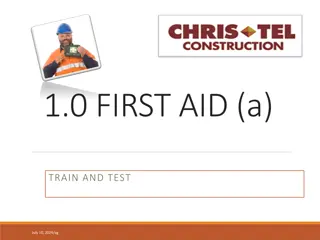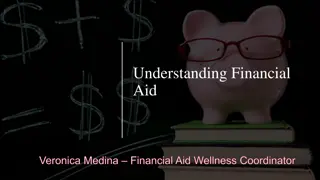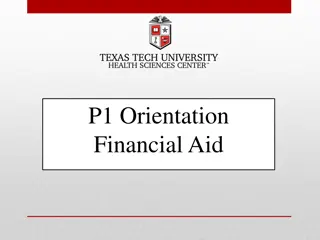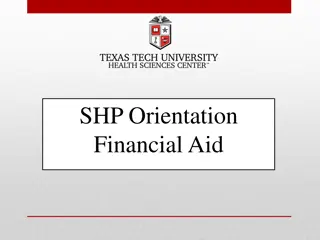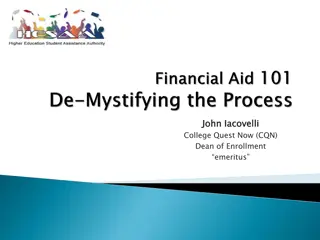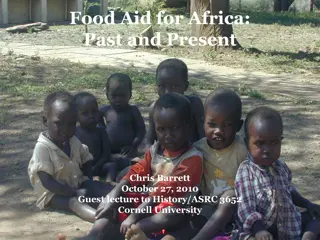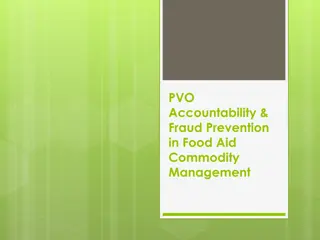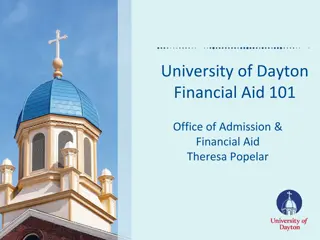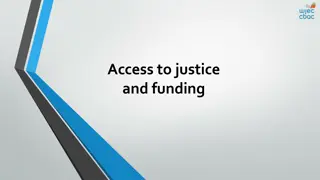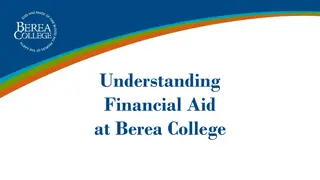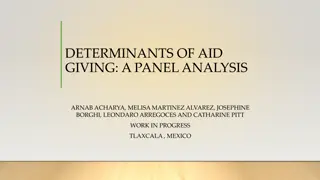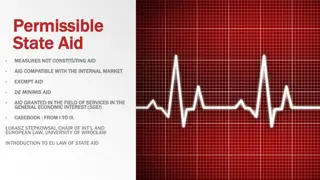
Food Aid and Assistance Learning Insights
Delve into insights on food aid and assistance, including demand and supply side pressures, evidence on procurement and nutritional needs, and the importance of multilateral mechanisms. Explore key lessons on multi-party actors, programming flexibility demands, and promoting inclusiveness in dialogues.
Download Presentation

Please find below an Image/Link to download the presentation.
The content on the website is provided AS IS for your information and personal use only. It may not be sold, licensed, or shared on other websites without obtaining consent from the author. If you encounter any issues during the download, it is possible that the publisher has removed the file from their server.
You are allowed to download the files provided on this website for personal or commercial use, subject to the condition that they are used lawfully. All files are the property of their respective owners.
The content on the website is provided AS IS for your information and personal use only. It may not be sold, licensed, or shared on other websites without obtaining consent from the author.
E N D
Presentation Transcript
Food Aid and Food Assistance: What Have We Learned Here? What Key Things Do We Still Need to Learn? Christopher B. Barrett Cornell University 4thTransatlantic Dialogue on Humanitarian Action Potsdam, Germany July 9, 2010
What Have We Learned Here? 1) With more people food insecure and policy reforms by many donors and implementing partners, there are both demand and supply side pressures for increased flexibility in programming options. This is now nearly universal across donors, recipients and implementing partners. 2) Significant and growing evidence exists on many issues local and regional procurement, nutritional needs and feasibility of food aid fortification, needs assessment, etc. Growing demand for rigorous evidence. 3) Not much truly new being said but FAR more common language and ambitions than, say , a decade ago.
Key things to learn 1 Proliferation of multi-party actors and fora: FAC, CFS, OECD/DAC, HLTF, CERF, Food Security Cluster, Sphere, World Bank, WTO, Codex, etc. - What is the mapping of definitions, objectives and responsibilities among these bodies? Reconciliation? - Form follows function: what do we want out of multilateral mechanisms? How to simplify/harmonize? - How to promote cost-effective inclusiveness in these dialogues, given budget pressures and capacity constraints faced by all parties? - What are practical solutions? What can be achieved in FAC renegotiation and what is beyond the scope of FAC? Beware letting the perfect be the enemy of the good!
Key things to learn 2 Increased programming flexibility demands: i) More and better evidence on performance variation across modalities (cash vs. food, LRP vs. transoceanic). What works, why and under what circumstances? This likely means fewer evaluations but higher quality per evaluation reduce the noise/signal ratio. Meta-studies? ii) New decision support tools for food assistance programming choices made with very limited time, funding, data or technical skills. iii) How to crowd-in parallel improvements in private food systems on which the poor and vulnerable most depend? iv) Pooling data, evaluation and tools: global public goods.


